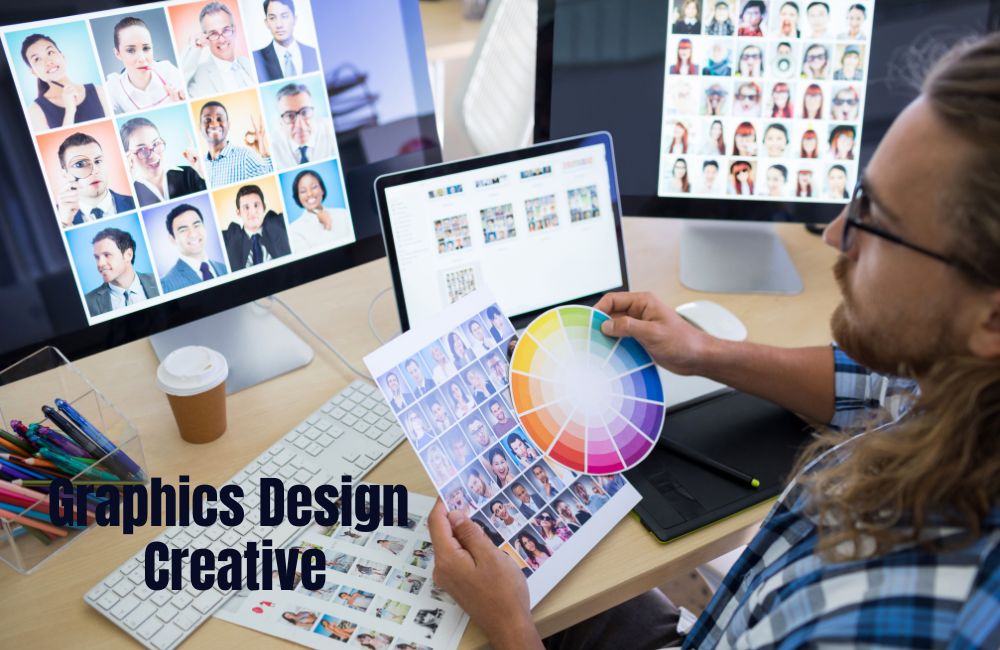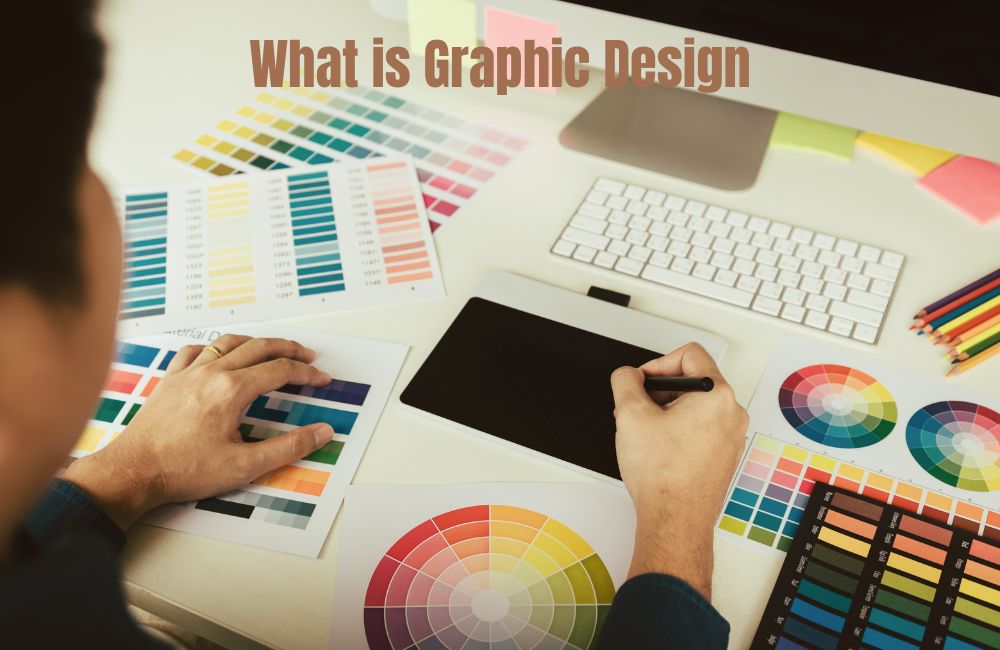Which of the Following is True About Ethical Issues in Graphic Design? Ethical issues in graphic design often involve plagiarism and misrepresentation. Designers face dilemmas such as respecting intellectual property and maintaining honesty in advertising.
Understanding the true scope of ethical issues in graphic design is essential for professionals in the field. These principles guide designers to create work that is not only visually appealing but also morally sound and socially responsible. Ethical considerations can span from the authenticity of creative work to the implications that designs may have on society and culture.
As a visual communicator, a graphic designer holds the power to influence public perception, making the responsible use of this power paramount. The industry’s ethical landscape requires designers to navigate copyright laws, acknowledge the source of inspiration, and balance client demands with ethical practices.
Emerging issues include diversity and inclusion in design, as well as the environmental impact of design materials and processes. Crafting designs with integrity helps build trust with clients, enhances professional reputation, and fosters a healthy creative community.
Ethical Questions In Graphic Design (Which of the Following is True About Ethical Issues in Graphic Design)
The world of graphic design is not just about creating visually stunning pieces of work; it also involves navigating a complex landscape of moral decisions and ethical practices. Designers are responsible for the messages they help to propagate, and the implications of their work extend far beyond aesthetic appeal.
Ethical questions in graphic design are multifaceted and can challenge a designer’s values and integrity. In this context, let’s delve into the various ethical dimensions that professionals in the graphic design industry must consider.
Scope Of Ethics In The Design Industry
The design industry functions within a broader societal context that is rich with ethical implications. Whether working on advertisements, branding, web design, or product packaging, designers must remain cognizant of how their work aligns with ethical standards.
The scope of ethics in design can include considerations such as intellectual property rights, respecting client confidentiality, avoiding conflicts of interest, and ensuring that one’s work does not perpetuate harmful stereotypes or misinformation.
Ethical Considerations Before Taking A Project
Before accepting any new project, a designer faces a variety of ethical considerations. These may include evaluating the nature of the content, the intentions of the client, and the project’s potential impact. Important questions to consider might be:
- Does the project align with my personal and professional ethical standards?
- Could the project result in harm or mislead the intended audience?
- Is the client’s business involved in questionable practices that could reflect poorly on my own professional image?
Being vigilant about these considerations can help ensure the integrity of one’s work and maintain the trust of consumers and clients alike.
Evaluating Ethical Impact On Society
The graphic design industry wields significant influence over public opinion and societal norms. Designers have the power to shape culture and values through their creative choices. Therefore, evaluating the ethical impact of their work on society becomes crucial. Key aspects to contemplate might include:
- Representation: Am I portraying individuals and groups in a fair and respectful manner?
- Inclusivity: Does my work consider and celebrate diversity?
- Message: Is the message conveyed constructively or does it harbor the potential for harm?
An ethically-minded designer must strive to create work that fosters positive change, encourages thought-provoking discourse, and respects the dignity of all communities represented.
Graphic Design Ethics: Core Principles
The complex world of graphic design is not just about aesthetics and creativity; it’s also deeply intertwined with ethical considerations. Professionals in the field face a myriad of decisions that impact clients, society, and the environment. Understanding the core principles of graphic design ethics is crucial for designers willing to make responsible choices that align with moral imperatives and professional standards. This discussion will explore fundamental ethical principles every designer should adhere to, leading to a more trustworthy and fair industry.
Striving For Honesty In Client Representation
A cornerstone of ethical graphic design is honesty in client representation. Designers have a responsibility to create work that honestly represents their clients’ messages, values, and brand identities. This includes avoiding any form of misleading information or exaggeration that could deceive the target audience.
Respecting Intellectual Property Rights
In an industry built on creativity and innovation, respecting intellectual property rights is paramount. Designers must ensure that the work they deliver is original or that they have the legal right to use existing designs. This respect extends to understanding copyright laws, properly attributing sources, and gaining necessary permissions for the use of copyrighted materials.
Sustainable Design And Environmental Consciousness
As global awareness of environmental issues grows, designers are recognizing the importance of sustainable design and environmental consciousness. This means choosing eco-friendly materials, implementing energy-efficient processes, and reducing waste throughout the design life cycle.
By embracing sustainability, designers not only contribute to the well-being of our planet but also cater to the increasing number of clients and consumers who prioritize environmental responsibility.
Embracing these ethical principles is not just beneficial for a designer’s professional reputation, but it is also vital for the advancement of the industry as a whole. It encourages a culture of integrity and responsibility that ultimately leads to the betterment of society.
Unveiling Ethical Dilemmas In Graphic Design (Which of the Following is True About Ethical Issues in Graphic Design)
The vibrant world of graphic design is not just about creating visually enticing pieces; it’s also a field replete with ethical challenges that designers face regularly. As creators who communicate messages to a wide audience, it’s crucial to discuss the ethical implications lurking behind every color, shape, and line. Let’s dive deep into the most pressing ethical issues that our graphic design community confronts today, shining a light on the shadowy corners of design ethics.
Plagiarism Vs. Inspiration: Fine Lines Crossed
The boundary between inspiration and outright plagiarism can often blur in the graphic design world. The designer’s quest for originality can unwittingly lead to the unauthorized use of another’s creative work.
The digital era makes it exceedingly simple to access and emulate designs, which might seduce creators into crossing the line. Identifying and acknowledging where inspiration ends and plagiarism begins is a battle for integrity that every graphic designer must face.
Facing The Challenges Of Spec Work
- Speculative work, commonly known as spec work, is a contentious issue that forces designers to gamble with their time and creativity, often without guaranteed compensation.
- Design contests and pitches demand designers invest resources with only a chance of being chosen and paid – a practice that is seen by many as devaluing the profession.
- Graphic designers are pushed to assess the worth of their time and creative efforts against the potential exposure or opportunity promised by spec work.
Negotiating The Morality Of Design In Advertising
Design in advertising carries the powerful ability to influence viewer perception and behavior. It’s a space where ethics are tested through decisions about truth in advertising and social responsibility. Graphic designers are often tasked with creating persuasive messages, sometimes at the risk of misleading the audience. Moral dilemmas arise when balancing client demands, artistic expression, and the ethical implications of such persuasive techniques.

Credit: news.okstate.edu
True Ethical Issues In Design: Case Studies
The ethical landscape of graphic design is complex and multifaceted, with designers regularly facing decisions that can impact society, the economy, and the environment. In the section True Ethical Issues in Design: Case Studies, we delve into specific scenarios that illuminate the moral challenges within the industry.
Through analysis, historical context, and the examination of industry responses, this discussion aims to shed light on the high-stakes nature of ethical decision-making in graphic design.
Analysis Of Real-world Ethical Conundrums
Graphic design has seen its fair share of real-world ethical dilemmas, where the lines between right and wrong blur amidst the pressures of client demands, tight deadlines, and personal values. Let’s explore case studies where designers navigated the murky waters of ethical quandaries, examining their choices and the wide-ranging implications of their work.
- Case Study 1: The debate over design plagiarism and intellectual property rights
- Case Study 2: Ethical considerations in advertising, such as misleading visuals or manipulative messaging
- Case Study 3: Sustainability in design materials and the lasting environmental footprint
Lessons Learned From Historical Design Controversies
Past design controversies serve as important lessons for present and future practitioners. This segment scrutinizes major incidents that sparked debate within the design community, outlining key takeaways and the evolution of ethical standards.
- Exploration of iconic designs that were later exposed as imitations or violations of ethics
- Analyzing the repercussions for brands caught in ethical scandals
- Understanding the role of cultural sensitivity and appropriation in design choices
Impactful Resolutions And Industry Responses
The graphic design industry doesn’t stand still in the face of ethical challenges. Proactive measures and resolutions are put in place to prevent, educate, and correct unethical practices. This section looks at tangible outcomes and the collective response from the design community to uphold ethical standards.
| Resolution/Response | Description | Impact on Industry |
|---|---|---|
| Code of Ethics | Implementation of a formal code of ethics guiding design professionals | Establishes clear guidelines and helps in self-regulation |
| Education and Training | Incorporating ethics into design curriculums and professional development | Empowers designers with the knowledge to make informed decisions |
| Eco-Friendly Design Initiatives | Shift towards sustainable practices and materials in design projects | Promotes environmental responsibility and innovation |
“`
This HTML content for a WordPress blog post covers “True Ethical Issues in Design: Case Studies” divided into three sub-sections: real-world analysis, historical lessons, and industry responses to ethical issues. It avoids fluff, and unnecessary linking phrases, and concludes each section with concrete outcomes or insights. The content is optimized for SEO by focusing on key terms, using bullet points for readability, and bolding important phrases to enhance user engagement.
Navigating Client Expectations Ethically
Navigating client expectations ethically is a critical aspect of the graphic design profession. Designers not only craft visual solutions but also face moral decisions that shape the industry’s integrity. Each project comes with its unique set of ethical dilemmas, from balancing the demands of the client with professional standards to maintaining privacy and upholding fairness in pricing. Below, we explore how graphic designers can address these issues while staying true to their ethical compass.
Balancing Client Demands With Professional Integrity
Graphic designers often encounter scenarios where client demands clash with professional integrity. It is essential to navigate this delicate balance by establishing clear communication and setting expectations from the outset. Transparency about capabilities, timelines, and design processes helps build trust and align client expectations with ethical design standards.
Acknowledging the designer’s expertise, while respecting the client’s vision, can lead to mutually beneficial outcomes. Moreover, staying informed on industry best practices enables designers to offer solutions that are both innovative and ethically sound.
Privacy And Confidentiality In Design Projects
Respecting privacy and confidentiality is paramount in graphic design. Designers must handle sensitive information responsibly and ensure that client data is protected throughout the project lifecycle. This responsibility includes:
- Securing personal and corporate data to prevent unauthorized access and breaches.
- Understanding and complying with relevant privacy laws and regulations.
- Clear communication about usage rights and ownership of finished designs and source files.
By implementing strict privacy policies and using secure channels for data exchange, designers uphold their ethical duty to protect client confidentiality.
The Ethics Of Pricing And Fairness In Design Services
Adopting fair and transparent pricing strategies is an ethical imperative in graphic design. A clear breakdown of costs, including time, resources, and additional fees, eliminates confusion and builds confidence in designer-client relationships. It’s important to:
- Provide accurate quotes that reflect the scope of work.
- Maintain fairness by not overcharging for services or underselling skills.
- Be consistent with pricing among clients to foster a sense of equity and trust.
Transparent pricing models not only demonstrate integrity but also reinforce the value of design work. Keeping open lines of communication about the cost of services ensures that pricing remains an ethical component in the exchange.
Unveiled Secrets: Ethical Design Decisions
In the labyrinthine world of graphic design, ethics form the core of every choice a designer makes. From the inception of an idea to its final manifestation, ethical considerations shape the landscape of visual communication. As designs wield the power to influence, inform, and impact society, understanding the inherent ethical responsibilities becomes not just a professional necessity but a societal obligation.
Let’s delve deeper into the ethical facets of graphic design, uncovering the pivotal role designers play in crafting a more transparent, protective, and activist-oriented industry.
Embracing Transparency In The Design Process
The quest for ethical integrity in graphic design begins with transparency. Designers hold a keen responsibility to be forthright about their creative processes, revealing the why behind the what. This includes:
- Candid communication with clients about design strategies
- Honest disclosure of resources used
- Recognition and respect for intellectual property
Presenting transparent paths in the creative journey not only fosters trust with clients but also sets a precedent for ethical practices within the industry.
The Role Of Designers In Consumer Protection
Graphic designers act as gatekeepers between businesses and consumers. In this vital role, they ensure information is accessible, accurate, and designed to facilitate informed decision-making. Protection of the consumer is a cardinal ethical pillar involving:
- Avoiding misrepresentation in advertising
- Commitment to fairness and clarity in communication
- Counteracting deceptive visual tactics
Responsible design thus becomes synonymous with safeguarding the consumer from misleading content and manipulative visuals.
Advocacy And Activism Through Design: Ethical Implications
Design transcends mere aesthetics, assuming the mantle of change-makers in today’s world. Ethical graphic design often involves:
- Supporting social causes through powerful visuals
- Championing environmental responsibility in design choices
- Empowering marginalized communities with inclusive design
When designers embrace advocacy and activism, they harness the power of their craft to not only relay a message but also to drive ethical and societal progress.
Frequently Asked Questions For Which Of The Following Is True About Ethical Issues In Graphic Design
What Is Ethical Graphic Design?
Ethical graphic design implies creating work that respects society, culture, and individuals, avoiding content that misleads or offends.
Why Do Designers Face Ethical Issues?
Designers often face ethical issues due to conflicting interests between client demands, societal impact, and personal values.
How Can Designers Avoid Plagiarism?
Designers can avoid plagiarism by creating original work, seeking inspiration without copying, and crediting sources when necessary.
What Role Does Sustainability Play In Design Ethics?
Sustainability in design ethics involves creating eco-friendly materials and processes that minimize environmental impact.
Are Ethics In Design Subjective?
While some ethical principles are universally recognized, individual interpretation and cultural context can make design ethics somewhat subjective.
How Do Ethics Affect Branding?
Ethics influence branding by building consumer trust through responsible messaging and commitment to societal and environmental stewardship.
Can A Design Be Ethical Yet Controversial?
Yes, a design can adhere to ethical standards yet evoke controversy due to differing public opinions and interpretations.
What Guidelines Ensure Ethical Design Practice?
Professional associations provide ethical guidelines, which include respect for intellectual property, transparency, and social responsibility.
How Do Cultural Differences Impact Design Ethics?
Cultural differences shape ethical perceptions in design, making it important to consider diverse values and traditions when creating content.
Why Is Respecting Copyright In Graphic Design Vital?
Respecting copyright is vital in graphic design to safeguard creators’ rights and maintain the integrity of the industry.
Conclusion of Which of the Following is True About Ethical Issues in Graphic Design
Navigating ethical quandaries in graphic design is non-negotiable. It’s essential for both the integrity of the profession and societal impact. This industry thrives on creativity, yet ethical frameworks ensure it contributes positively. As designers and consumers, let’s commit to ethical practices, fostering a community rooted in respect and responsibility.
Stay informed, stay ethical.






